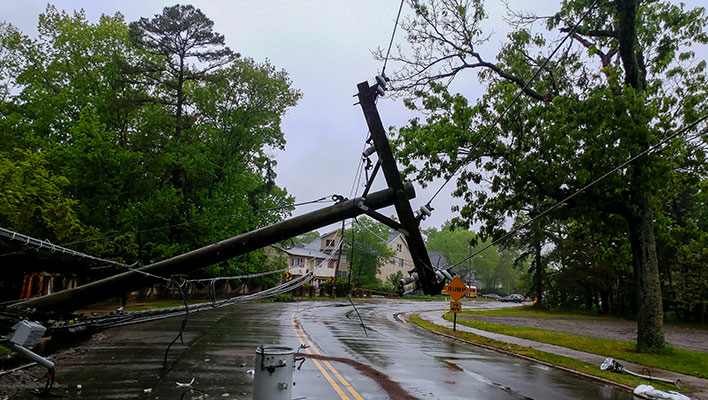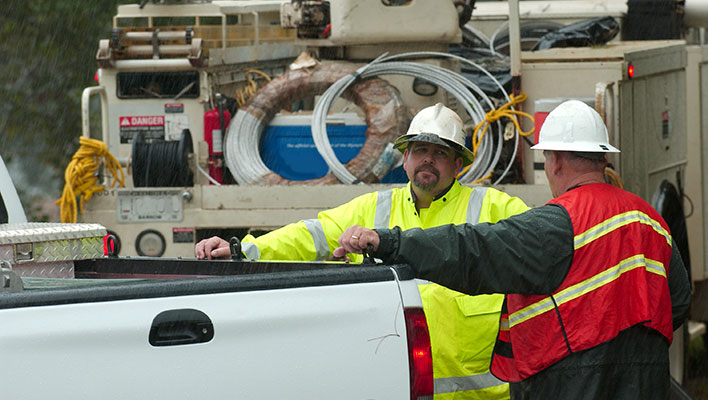Frequent POWERGRID International contributor and ARCOS Customer Success Manager, Jason Rhoades, once again produced an “Executive Insight” article. In this article, he leverages his experience and expertise to comment on the importance of automating the damage assessment process.
In preparation for major events, utilities can stage poles, conductors, transformers. They can tap into storm prediction models. And, of course, they can mobilize line workers, inspectors and request mutual aid crews. Experience has made utilities very efficient when it comes to bracing for storms. But after a storm, there’s far less efficiency especially with assessing damage. In fact, my employer’s data shows nearly 80 percent of utilities assess damage with manual, paper-based methods.
Think about preparing for a storm. A utility will carefully assess how many crews are needed to restore service, prepare logistics, and then roll trucks. But crews ready to restore power are often sidelined until damage assessors toting paper feeder maps examine circuits, write notes and drive to an office where staff input data. Once compiled, the planning section analyzes the data for a snapshot of damage.
Collecting damage assessments by hand creates up to a 12-hour lag from the end of a storm until managers can get even a partial view of conditions. During those early hours after a storm, some information flows through the line department by word of mouth. But for managers trying to run a storm, the delay in seeing the big picture is challenging at best.
Imagine a utility is hit by a straight-line storm creating outages for 300,000 customers. From experience, the utility’s storm managers know an event of this scale has broken up to 200 poles, snapped hundreds of cross arms, and cut thousands of wire spans. A storm this large will have affected neighboring utilities, too. So, a storm manager will have to act quickly while resources are available and make a request for non-native crews without knowing exactly how many line workers his utility needs. To be safe, the manager askes for 500 line workers and another 40 damage-assessment teams. After the request, and 12 hours into the storm, the manager gets the first of many spreadsheets–the initial one shows about 25 percent of the service territory’s damage.
This first spreadsheet compiled from damage assessments notes 100 broken poles. But again, that is only a quarter of what the storm potentially damaged. Managers discuss the possibility of needing another 250 line workers. Their decision, however, is based on averages, and it’s now the second day of restoration. More discussions happen. Managers decide that if any of the additional requested workers can’t arrive within 48 hours, they won’t need them.
Automating damage assessments
While most utilities rely on paper maps, spreadsheets, and phone calls to assess damage, a growing number of power companies are automating this work. With smartphones and tablets, some utilities have armed damage assessors with the means to digitally pass along their findings, notes, and photos to the back office in real time. With these field mobility systems, damage assessors canvas an area after a storm and digitally transmit data as they drive. When they find a broken pole, they take photos with a mobile device, record information using voice-to-text features, note the asset’s exact GPS coordinates, and upload everything for the back office to review with managers.
If assessors can’t get cell reception, then as soon as they are in range the information transmits to the back office and planning section for a clear picture of the trouble location. With input from the storm managers, staff then build work packets with the details and material for each job, including alerts for the relevant service yard’s storeroom. By automating damage assessments, crews can drastically cut (even eliminate) time waiting for assignments, directions, and materials.
With damage assessments delivered electronically to storm leaders who are receiving real-time information, they can more accurately request the number of crews for restoration. That precision eliminates the guesswork that leads to either delays restoring power because a lack of crews or overpaying for crews not needed. Automated damage assessment saves time and money for utilities and restores power more efficiently. It’s a future that utilities can implement now.




